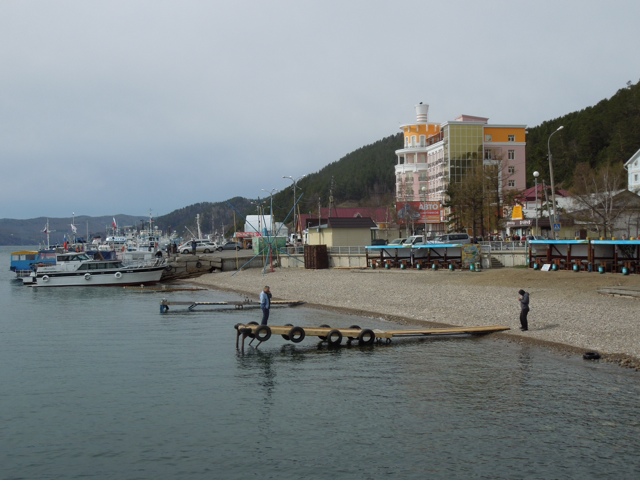Lake Baikal "The Pearl of Siberia" forms a gigantic 395 mile long half-moon shaped, natural, fresh-water reservoir.
Contains one fifth of the world's fresh water, enough to supply the world's fresh water requirements for 40 years. The lake has a surface area of 12,000 square miles, eighty miles across, and one mile deep. It has it's own weather system, and a unique diversity of plant and animal life. 80% of the species here cannot be found anywhere in the world, including freshwater seals (Nerpa) which currently number 60,000, and a Bailkal delicacy , the Omul (related to the salmon and the trout). The very high levels of oxygen in the water create the ideal conditions for many creatures which have long since become extinct elsewhere. This includes 1,085 types of algae,250 mosses,450 lichens,1,500 vascular plants,255 small crustaceans,83 gastropods, 86 worms and 52 fish. The lake is crystal clear due to several species of sponge that continually filter the lake's water.
The lake was formed 20-30 million years ago . The lake is getting wider and some geologists theorise that Asia is splitting apart here and that Lake Baikal is an ocean in the making.
From December to May the lake is frozen to a depth of between 3-10 feet. The water temperature is approximately 40 degrees (in May)
The train was hooked up to a local steam engine. This part of the Circumbaikal railway became a spur in 1950 when the original route along the Angara via Port Baikal was to become submerged after the building of the Angara dam in Irkutsk.
We had a picnic on the lake serving local delicacies, and of course, vodka, Serebriany Kliuch (Silver Springs) was the area we stopped.
We took a boat ride across the lake and went to the local museum and aquarium.
We crossed the Russian border at Naushki and were entertained by a folk group..







































No comments:
Post a Comment